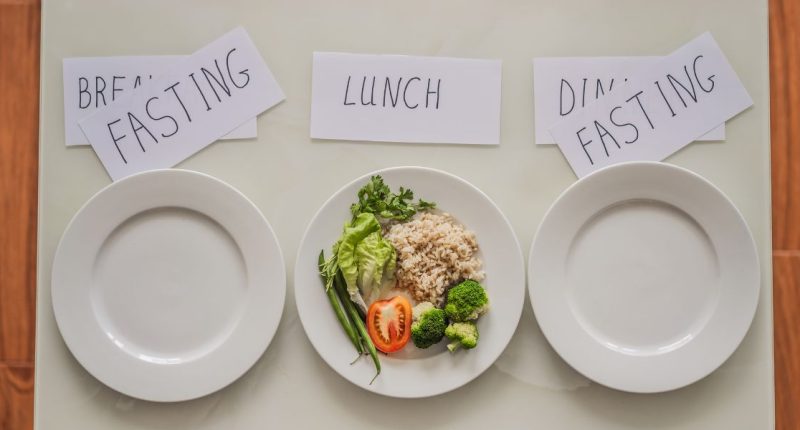Postmenopausal women can improve their metabolic health by completing high-intensity interval training (HIIT) and intermittent fasting, new research has indicated.
Academics have found that a low-calorie diet alongside HIIT workouts can also improve the metabolic health of postmenopausal women.
Menopause is the natural cessation of menstruation, marking the end of a woman’s reproductive years.
- New study showcases benefits of intermittent fasting
- Weight loss can be achieved by intermittent fasting
- Popular fasting diet more beneficial for treating type 2 diabetes than drugs, researchers say
Typically, it occurs between the ages of 45 and 55 and is characterised by a decline in oestrogen and progesterone production.
Several physiological changes are associated with the menopause, including increased visceral fat and reduced muscle mass.
Metabolic dysfunction, systemic inflammation and insulin resistance can all be caused by these changes.
To manage these issues, postmenopausal women are recommended several strategies, such as a combination of nutritional and exercise interventions.
Intermittent fasting is an eating pattern that cycles between periods of eating and voluntary fasting on a regular schedule, rather than focusing on what you eat, but when you eat.
This eating style can change the level of orexin-A (OX-A) – a hypothalamic hormone that maintains energy balance and regulates eating behaviours.
Orexin neurons are activated by fasting, which then stimulate neuropeptide Y (NPY) and agouti-related peptide (AgRP) – appetite-increasing hormones. Heat production and fat breakdown are triggered by both NPY and AgRP.
Prior research has revealed that intermittent fasting improves metabolic flexibility – the body’s ability to efficiently switch between burning glucose (from carbohydrates) and fatty acids (from fat) for energy, adapting to different energy demands and availability. Studies have also shown that HITT enhances metabolic and appetite-related responses.
In this eight-week trial, a total of 30 postmenopausal women followed a low-calorie or intermittent fasting diet along with HIIT.
The findings have revealed that all the participants improved their physical performance, metabolism and neurohormonal signalling, regardless of which diet they were following.
- Beyond weight loss: health benefits of prolonged fasting investigated
- Intermittent fasting linked to 91% higher risk of cardiovascular death
However, the participants in the intermittent fasting and HIIT group experienced greater improvements in their physical performance and had greater mean heart rates and endurance compared to those in the low-calorie diet and HIIT group, the study has reported.
In addition, the OX-A levels of the participants in the intermittent fasting group exceeded that of the low-calorie diet group, according to the results.
The authors said: “The combination of intermittent fasting and HIIT offers a dual-action strategy, enhancing metabolic flexibility while stimulating the orexinergic system to mitigate the metabolic decline associated with menopause.”
Read more in the journal Nutrients.






